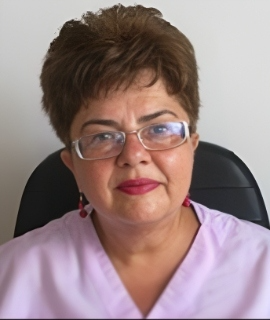Title : The importance of selecting and structuring acupuncture points prescription according to the composition of a herbal formula in Traditional Chinese Medicine
Abstract:
The study aimed to demonstrate the importance of the association of acupuncture points in prescriptions selected according to the model of the composition of a phytotherapeutic TCM formula and differentially applied to a number of 100 patients suffering from Panic Disorder (PD) according to the diagnosis of energy imbalance.
The energy imbalance was identified according to the principles and rules for differentiating syndromes postulated by TCM.
This is an open, prospective, interventional study, in which 100 patients were recruited from the patients of the Tai Chi Medical clinic in Târgovi?te, Romania.
Patients presented spontaneously to seek TCM diagnosis and treatment with the diagnosis of PD established by the psychiatrist.
They were recruited after reading and signing the Patient Informed Agreement, in which they agreed to participate in the study and that its results could be processed and published.
After the syndrome differentiation process, the 100 patients were divided into 4 groups according to their classification into the following four syndromes:
1. Kidney Yang Deficiency
2. Yang Deficiency in the Kidneys and Spleen
3. Yin Deficiency in the Kidneys and Lungs
4. Yin Deficiency in the Kidneys and Liver
We are dealing with four diseases that are different both in etiology, pathophysiology and clinical manifestations.
The diagnosis of TCM is important in PT also because it identifies etiological factors not reported as such in conventional medicine (CM).
TCM diagnosis was also correlated with patients' comorbidities, which were found to be manifestations of the same energy imbalance manifesting simultaneously or successively in different structures of a patient's body.
Each group received acupuncture treatment and dietary indications depending on the syndrome.
The prescription of acupuncture points followed the formula Jun?-Chen?-Zuo?-Shi?
Patients also followed dietary instructions, which consisted of introducing selected foods into their diet to balance respective energy imbalances.
In the life discipline of patients, avoidance of etiological factors differentially identified according to the syndrome was also indicated, many of them not being associated with CD as causal factors of TP.



